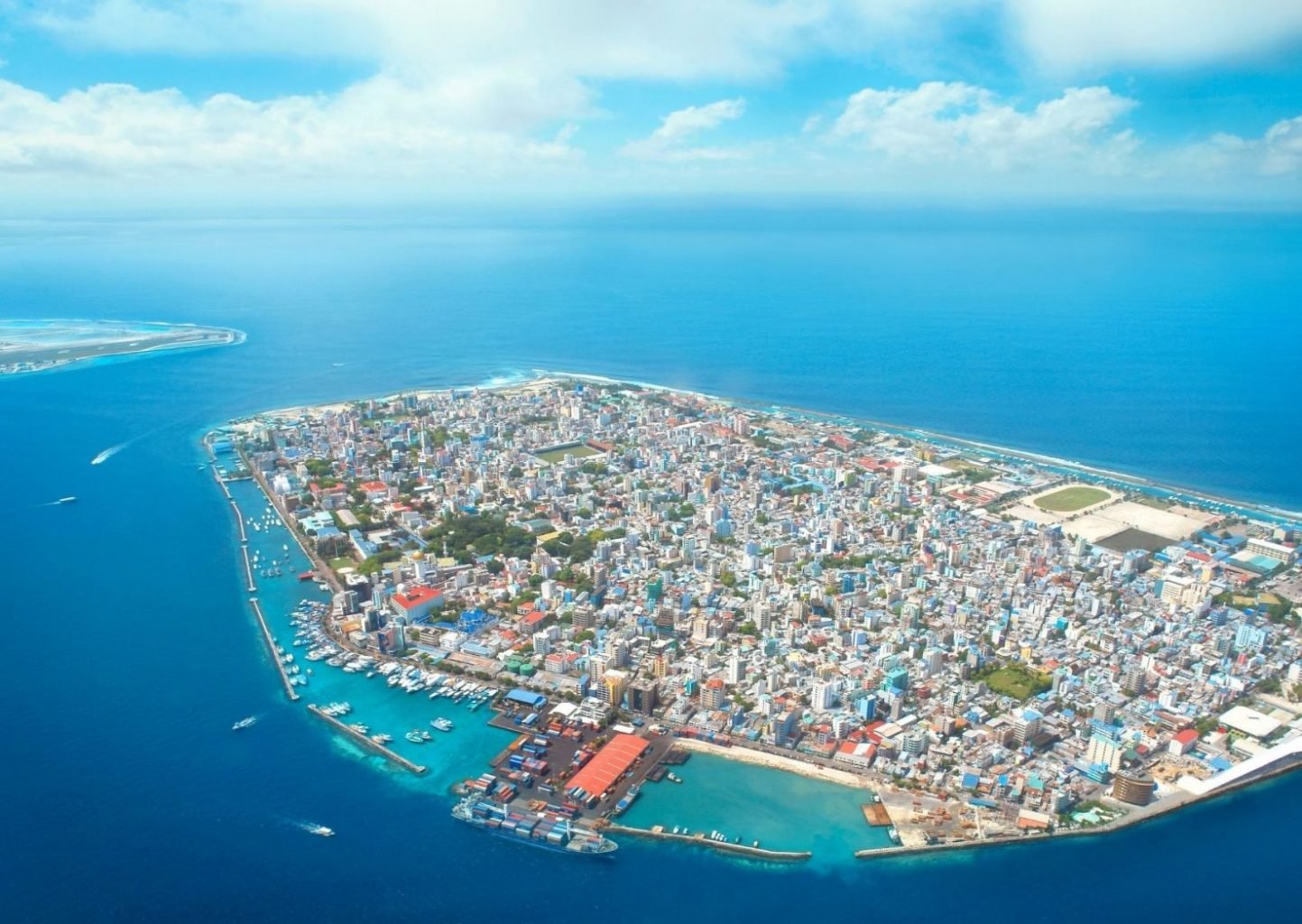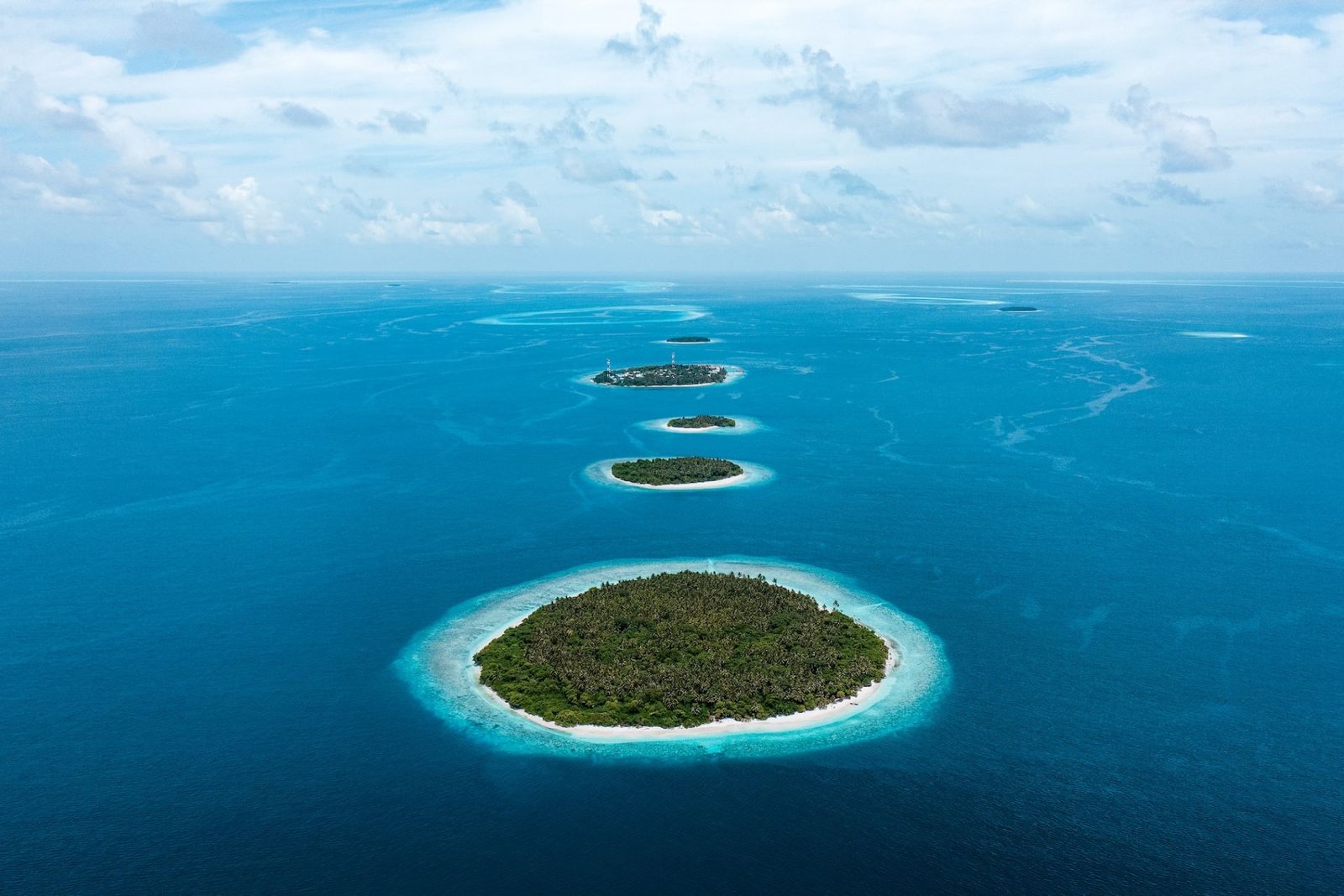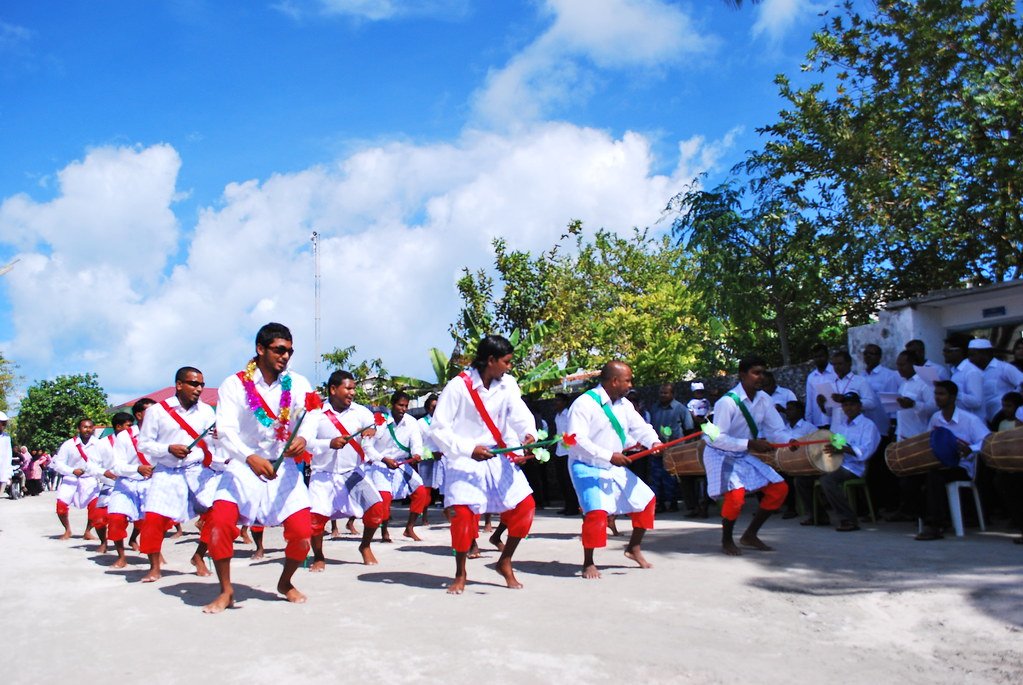The Maldives is made up of 1,190 coral islands arranged in two rows of twenty-seven atolls located in the Indian Ocean. The majority of atolls are formed by a large, circular coral reef that sustains many small islands.
The nation encompasses an area of roughly 90,000 square kilometers, with merely 298 square kilometers consisting of dry land. The islands typically range from one to two square kilometers in size, and no single island exceeds a length of eight kilometers. The Maldives is positioned at an elevation of 1 to 1.5 meters above sea level, while the tallest island reaches an altitude of 3 meters above sea level.
The Maldives is predominantly characterized by its flat terrain, lacking significant landforms like hills or rivers. However, certain islands, such as Hithadhoo in Addu Atoll, feature dunes, while others, like Fuvahmulah in Gnaviyani Atoll, are home to wetlands and marshes.
The Maldives is famous for its immaculate white sandy shores, crystal-clear turquoise waters, and distinctive underwater ecosystems.
In 2011, Baa Atoll, recognized for its globally significant biodiversity and numerous reefs in the Indian Ocean, was designated as a UNESCO Biosphere Reserve.
The population of the Maldives is spread across various atolls, comprising approximately 200 inhabited islands. Of these, around 164 islands have been developed into tourist resorts, while the remaining islands are either uninhabited or utilized for agricultural and other livelihood activities.
The city of Male’ serves as the capital of the Maldives.

The Maldives experiences a consistently warm and humid tropical climate throughout the year, significantly shaped by two predominant monsoons.
Situated at the equator, the Maldives enjoys abundant sunshine year-round. The temperature typically fluctuates between 25° Celsius and 32° Celsius during the entire year.
The dry season, associated with the northeast monsoon, extends from December to April, whereas the rainy season, linked to the southeast monsoon, occurs from late May to November.
For more information regarding the weather in the Maldives, please refer to http://www.meteorology.gov.mv/.

The Maldives recognizes Dhivehi as its official language, a distinctive tongue exclusively spoken by its inhabitants.
Dhivehi belongs to the Indo-Aryan language family, drawing its origins from Sanskrit and exhibiting influences from other prominent regional languages. The introduction of Islam in the 12th century brought Arabic influences to the language, while the establishment of English medium education later introduced elements of English.
The spoken form of Dhivehi features significant dialectal variations, particularly among the southernmost islands, which showcase the most pronounced differences.
The script used for Dhivehi, known as Thaana, is written from right to left, akin to Arabic script. This script was developed in the 16th century, following the nation's liberation from Portuguese rule.
The Thaana alphabet comprises 24 letters, accompanied by 11 distinct vowel or diacritical signs referred to as fili in Maldivian, which are positioned either above or below the letters to indicate specific sounds.

1. The ancient history of the Maldives remains largely obscure; however, scholars and historians assert that this nation has been inhabited for over 2,500 years. The Maldivian population is the product of multiple waves of migration from various regions of the Indian subcontinent, coupled with centuries of interactions among diverse races and ethnicities traversing the Indian Ocean.
The distinctive cultural practices and the varied physical characteristics of the Maldivian people reflect the nation’s status as a cultural melting pot, a consequence of its strategic geographical position. Throughout history, the Maldivians have been influenced by a multitude of genetic and cultural elements. Evidence of African, Arabian, Indonesian, and Indian ancestry can be observed in the physical traits of the populace and in cultural expressions, particularly in the traditional drumming dance known as Bodu Beru, which resonates with African influences. The vibrant Maldivian culture, craftsmanship, and traditions have been molded by the island's environment and the surrounding seas.
As of 2020, the population is estimated to exceed half a million, with approximately one-third residing in the capital city of Male’, while the remainder inhabit various other islands throughout the nation.
Traditionally, the livelihoods of Maldivians have been closely tied to the ocean, with fishing serving as the primary source of sustenance. Although fishing continues to play a significant role in the economy regarding employment and income, tourism has emerged as the principal economic driver for the Maldives today.